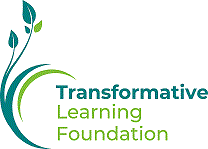Aesthetics as a Curriculum of Holism and Healing
Keywords:
Aesthetics, Holism, Healing, CurriculumAbstract
For centuries, aesthetic experiences have played a significant role in health and wellbeing. Aesthetic experiences typically involve creating and participating in the arts (song, dance, music, media, etc.) and through communing with nature. They are multisensory, imaginative, and contemplative. Aesthetic experiences work to restore emotional and physical balance in the lives of individuals and communities. They are also holistic in their ability to heal the fragmentation of body, mind, and spirit. Despite ample historical, cultural, and scientific evidence, modern industrial cultures have disavowed this link between aesthetics, holism, and healing. This is reflected in current curriculum practices that focus solely on developing the mind, to the exclusion of body and soul. This paper reaffirms the relationship between aesthetics and holistic healing and considers what this may mean for curriculum. Examples are drawn from Greek mythology, Indigenous wisdom, nature, neuroaesthetics, and the concept of pilgrimage, among others. Connections are also made to the author’s experiences in using aesthetic curriculum in his middle school and graduate school classes as a way to promote holistic learning and healing.





